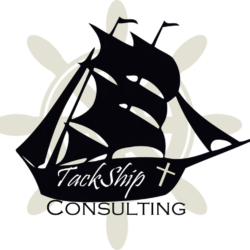Data Component of Traction
Data is a great and comforting thing for me. I like to see numbers, so I know where I stand. Am I improving? Has my performance declined? Statistics about performance abound, in sports, business, and even our personal lives. Fantasy sports is all about tracking the performance of individual players or teams, and we create competitions based on this data.
The stock market is all about different metrics on the performance of companies, which we invest or divest of so that we can increase our personal value.
Personally, my 100-yard freestyle swimming time is something that I’d like to see go down over the years that I have been swimming.
Measuring something can help to maintain focus on that thing. Numbers are a fascinating way to track our lives, personally and professionally. I think about the number of people who track their performance in running, swimming, weight lifting, cycling, weight loss, and calories. If we focus on numbers, we can figure out what we need to do to move the number in the direction we desire. For example, Weight Watchers has historically been a way for people to lose weight by focusing on calories or points and tracking those numbers daily to create change in weight for people.
Similarly, in business, focusing on our data can allow us to see the performance of our company and see if we are moving towards our goals (10-year target, 3-year picture, 1-year plan, Quarterly Rocks). As we set our goals in the Vision component of Traction, we want them to be SMART, and if you recall the “M” in SMART, it stands for measurable. When we measure and keep track of the data, it will allow us to see how close or how far away we are to the desired outcome.
Providing people with measurables and targets can help them focus on something important. There needs to be a balance to set the right measure for people to track their performance while integrating it into the rest of the organization. If your sales team is bringing in more work than your operations team can service, you may want to adjust your sales team number to larger clients rather than the number of clients.
EOS Measurable Advantages:
- Numbers cut through the murky subjective communication between manager and direct reports
- Numbers create accountability
- Accountable people appreciate numbers
- Numbers generate clarity and commitment
- Numbers create competition
- Numbers produce results
- Numbers create teamwork
- Numbers help solve problems faster
Create a scorecard
Creating a scorecard is a great way to track data. The Traction scorecard looks like this:
Who – is the person accountable for the measurable.
What is the Measurable? Anything that you can easily track: revenue, cash flow, new leads, and customer satisfaction.
What is the goal for the metric? The goal of the Company Scorecard is to go over it at the weekly meeting. Then track the number each week of the quarter to monitor progress.
As with most Traction approaches, there should be a limited number of measurables, 5-15, and less is more since you want to focus on what is essential and not just measure things for measurement’s sake. Allowing for objective, data-driven analysis of performance, helping people to stay focused on tasks that help improve the numbers.
Keep focusing on the measurables for at least the quarter, and if something needs to change, then it needs to wait until the next quarter. Eventually, you will dial in the right measurables so that your employees, divisions, departments, and company are all tracking the right things that help to achieve your rocks, plan, picture, and target – this is Traction.
Get Professional Help
Our professional team can help you create measurable goals that everyone can easily follow.
Activate your passion, and optimize your performance with Tackship Consulting today. To learn more, schedule your free consultation.


